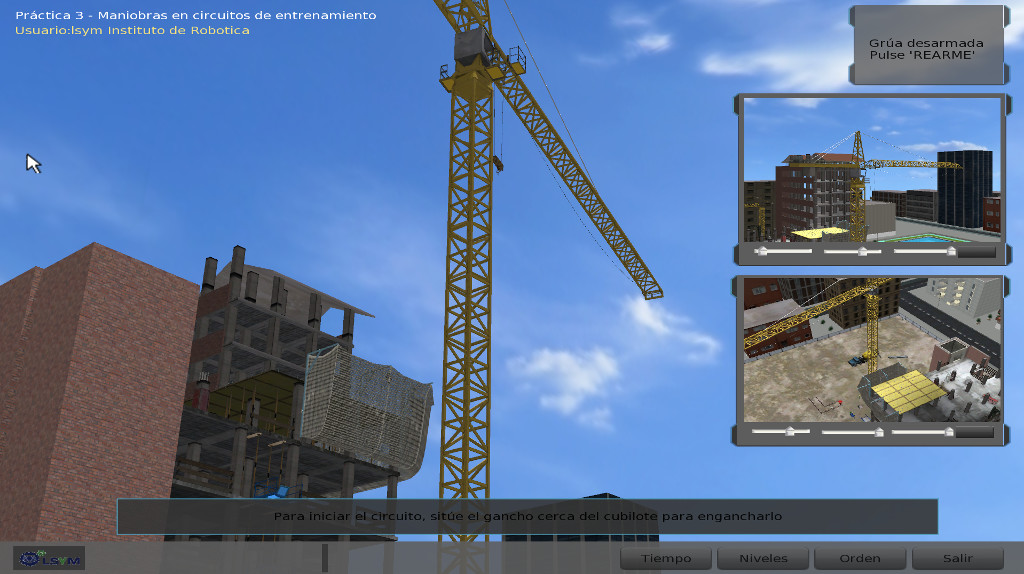- Home
- Home
- Mining and construction simulators
- Training Systems
- Port simulators
- Training Systems
- Industrial simulators
- Training Systems
- Gallery
- Training Systems
- Hardware Components
- Hardware
- Simulator Models
- Hardware
- Why Simulators?
- Hardware
- Technical information
- Software
- Our Solutions
- Software
- Instructor Information
- Software
- Collaborative Mode
- Software
- Services
- Services
- Ship-to-Shore Crane Simulator
- Bulldozer Simulator
- Mobile Harbour Crane Simulator
- Mining Truck Simulator
- Wheel Loader Simulator
- Underground LHD Loader Simulator
- Forklift Simulator
- High Capacity Forklift Simulator
- 360 Excavator Simulator
- Mobile Crane Simulator
- Rail Mounted Gantry Crane Simulator
- Tower Crane Simulator
- Rubber-Tyred Gantry Crane Simulator
- Telehandler Simulator
- Grader Simulator
- Reach-Stacker Simulator
- Backhoe Simulator
- Ro-Ro Simulator
- Straddle Carrier Simulator
- WheelDozer Simulator
- Articulated Mining Truck Simulator
- Electric Shovel Simulator
- Empty Container Handler Simulator
- Drilling Jumbo Simulator
- Bridge Crane Simulator
- Farming Tractor Simulator
- Harvester Simulator
- Ship Pedestal Crane Simulator
- Mobile Elevating Work Platform (MEWP) Simulator
- About us
- About us
- Our Learning Methodology
- About us
- Contact
- Contact
The Tower Crane Training System application is based on a 3D user environment so that navigation through it is easy and intuitive, also allowing a complete integration of the didactic content and the simulation system based on virtual reality.
Motivation
- To improve the economic performance of real cranes as you have to spend less time for training periods.
- Improving operator learning speed curve.
- Control of adverse situations
- Increase of the safety for operators and cranes.
- Quality image projection of the environment.
A real solution
- Building an immersive environment based on “Virtual Reality” Techniques analogous to the real environment of the workspace of a tower crane.
- The operators will handle the controls, feel the movements, and hear the sounds due to the operations performed and they will see the workspace as if they were on a real tower crane.
- The simulator provides a real mechanical control panel and a system that provides visual and audio effects.



Immerse yourself in the simulation environment. Weather conditions
The simulator implements several types of weather situations that may be critical in the real world such as low visibility on a very cloudy day or on a dark night. These conditions are also reflected in the physical operation of the crane, making much more difficult to perform successfully the different exercises on rainy and windy days.It should be noted that implementing new types of exercises is easy if necessary for some specification of a particular case.
Using a panel, the user can choose the weather conditions to simulate, changing the time of day, rainfall, wind speed or cloud cover. The fog effects can be activated to increase the difficulty of the exercise being carried out by the operator. A real situation is provided to the user for increasing the immersion in the environment. Some examples are shown below.



Main System Features
- Virtual settings with real digitized images.
- 3D graphic models of high quality.
- Portable projection system with passive stereo projection and tracker.
- Playing a real sound of a crane during the simulation.
- Using real controls of a tower crane.
- Mathematical model designed from real cranes.
- Weather Phenomena: wind, rain, ...
Instructional design
The simulator for training by LSyM has a complete instructional design that guides both the learner and the instructor, using the experience of this, in order to maximize the learning capacity of users.
The main functions available are the following:
- Multimedia teaching material integrated in the 3D training system.
- Exercises handbook.
- Operators’ databases system.
- Tracking system of the learning programme for each learner.
- Obtaining reports, summaries, etc.
- Guided practices by sound messages and on the simulator screen.
- Record of non-allowed and dangerous operations.
User and Groups Management
The simulator provides the necessary functions for the proper management of users and workgroups. Through the interface, basics tasks such as creating, editing and deleting users can be done adapting the simulator use to the customer needs. It also allows you to view statistics and evaluations of each user in a clear and detailed way.
Evaluation of exercises
Every time an exercise is performed on the simulator, the necessary data is stored to proceed with the evaluation of the exercise itself. Users can access this information shown by an exercise report. This report contains important data such as the movements made or the remarkable observations and they are presented to users by charts and graphs showing in detail each one of the evaluated parameters, as well as information of interest such as the time taken to carry out the exercise, number of the exercise done, date, etc.

